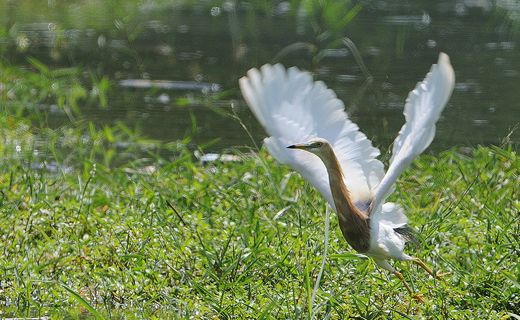It is fascinating to watch the Javan Pond Heron (Ardeola speciosa) taking off in flight. From the ground it bends its legs to a crouch, then jumps up, to gain the initial impetus. As it jumps, its huge pair of wings unfolds and begins flapping (below). The downward strokes lift the bird into the air. Once airborne, the bird begins a continuous series of flapping to maintain its altitude.
When level flight is reached, it has its legs and feet fully extended backwards and neck drawn into an “S” position. It may flap some more to maintain its altitude for some distance before gliding, with wings fully extended.
The wings are typically broad and elliptical. Note the large primaries and secondaries that make up the major wing feathers (above). Note also the short, rounded tail. Unlike many raptors that need longer tails for maneuvering as they chase preys, herons do not need to maneuver about. A shorter tail allows the bird to take off quickly but it reduces its ability to make sharp turns.
The dramatic image above shows the powerful large wings in their down stroke, providing its initial lift.
Since this pond heron was recently sighted, photographers had a field day documenting its presence and flight (1, 2).
Mark Chua
Singapore
April 2008
prices on staining decks test












Recent Comments